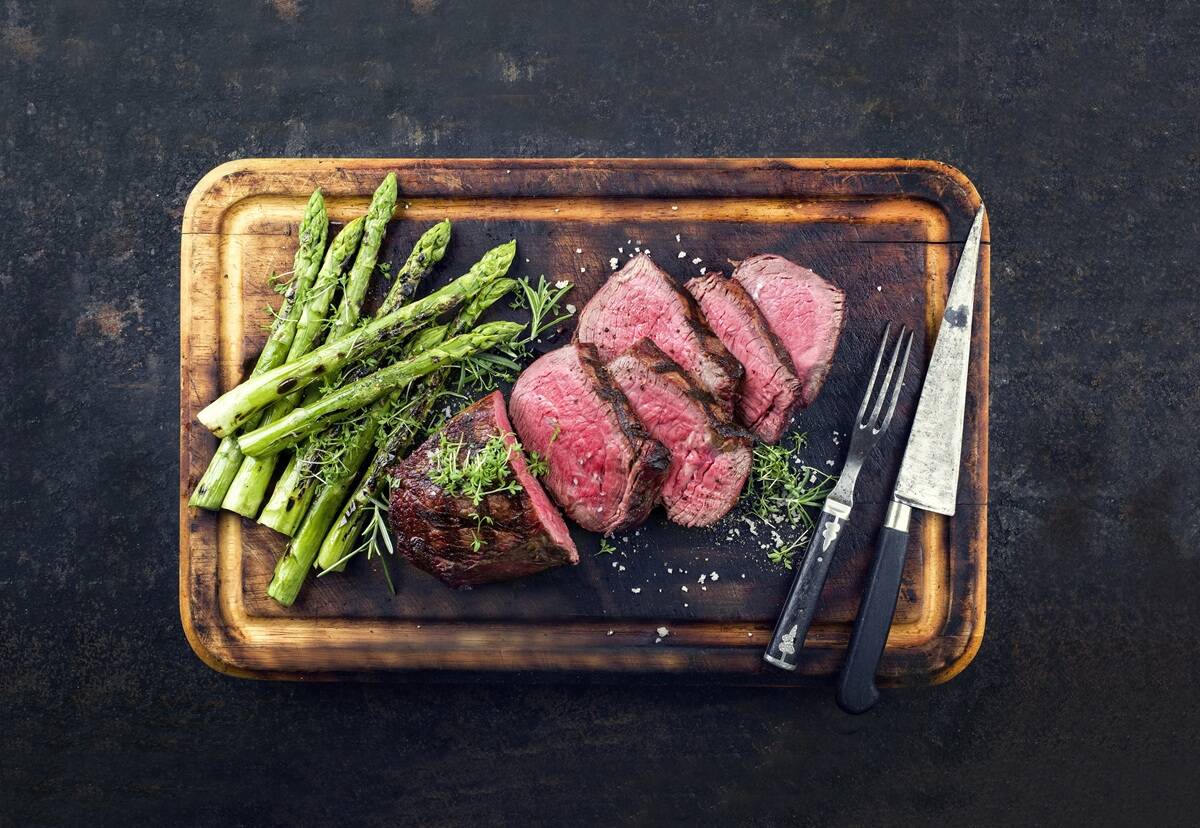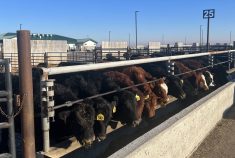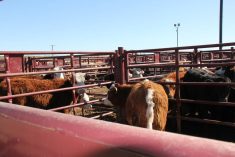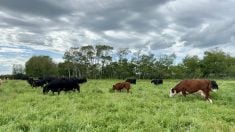This year, crop yields in the Prairies have improved significantly compared to the last few years, thanks to increased rainfall in Western Canada. However, the dry and hot conditions in July and August negatively affected cereal grain quality in some areas. This weather occurred during a critical growth period for barley, specifically during the filling of the seed heads, leading many producers to report low bushel-weight barley (≤47 lb./bu.).
Low bushel-weight barley typically has lower starch content and higher levels of protein and fibre (NDF and ADF). These changes can pose challenges for the beef industry, as they may reduce feed efficiency and overall growth performance of beef cattle. On the positive side, a significant portion of the barley produced this year may not meet malting standards and will instead be sold as feed. This presents a valuable opportunity for beef producers if the barley is priced correctly.
- RELATED: Do your homework on alternative feeds
- RELATED: Prairie feed grains market watching U.S. corn
Barley is the primary energy source for supplementing beef cattle in Western Canada. As we approach the fall season, with calves arriving at feedlots and plans being made for winter supplementation of beef cows, it is timely to discuss how barley grain quality and processing affect its feed value.
Several factors influence the chemical composition of barley, including the variety grown, the location, and the weather conditions (precipitation and temperature). Research from the University of Manitoba indicates that barley test weights can range from 40 to 56 lb./bu., with an average of 50 lb./bu. The chemical composition of barley grain varies widely, with starch content ranging from 48.1 per cent to 64.8 per cent (average 58.2 per cent), crude protein from 9.3 per cent to 18.2 per cent (average 13.4 per cent), NDF from 11.5 per cent to 20.2 per cent (average 15.3 per cent), and ADF from 4.5 per cent to 8.6 per cent (average 6.21 per cent).
Read Also

Building demand together: The impact of Canada’s beef import levy
The beef import levy has become a central tool for ensuring balance in Canada’s beef industry
Feed barley is typically priced based on its bushel weight. Many beef producers are questioning how much they should pay for the low bushel-weight barley available this year. While bushel weight correlates with chemical composition, it has only a moderate relationship with the nutritional value for beef cattle. Studies from the 1980s and 1990s by researchers at the University of Alberta and Agriculture and Agri-Food Canada (AAFC) indicate that bushel weight does not linearly correlate with feed efficiency or growth performance in beef cattle. These studies found that high bushel-weight barley does not necessarily lead to better feed efficiency or growth than average bushel-weight barley, suggesting that paying a premium for heavier barley may not be justified.
However, these Canadian studies and research from the U.S. (Idaho and Montana) show that feeding cattle low bushel-weight barley (<47 lb./bu.) can reduce feed efficiency and average daily gain. The processing methods and production practices used in earlier studies (1960s to 1990s) differ significantly from current practices, making it challenging to estimate the feed value of low bushel-weight barley today. Collectively, these studies suggest that for each unit decrease in barley bushel weight below 47 lb./bu., there is an increase of approximately 0.05 in the feed-to-gain ratio. Given current barley prices, this translates to about a one per cent increase in feed cost of gain for each unit decrease in bushel weight.
Differences in bushel weight, along with variations in starch, protein and fibre content, can also affect carcass traits and dressing percentage. A reduction in starch and an increase in NDF content can lead to more fat deposition in non-carcass areas (kidney, pelvic and heart), resulting in a lower dressing percentage. This means that the reduction in feed value associated with decreasing bushel weight may be even more pronounced when selling cattle based on carcass weight and quality rather than live weight.
Another important consideration when feeding barley is the processing of the kernels. Proper processing can often yield greater economic benefits than minor changes in barley’s chemical composition. To maximize the value of barley for beef cattle, the grain kernels should be broken at least in half during processing to allow rumen microbes access to the starch inside. Dry rolling is the most common method used in Western Canada for this purpose. Without adequate processing, a significant portion of the grain may pass undigested through the cattle’s digestive system, resulting in nutrient loss.
However, it is crucial to avoid over-processing barley, as this can lead to digestive disorders such as acidosis and bloat. To assess whether your barley has been processed effectively, measure the processing index and the percentage of fines after processing. The processing index is the volume weight of 500 ml of processed grain expressed as a percentage of the weight of the whole grain before processing. A lower processing index indicates more severe processing. Fines refer to the portion of processed grain that passes through a 1.18 mm screen. For dry-rolled barley, we should aim for a processing index of 70 per cent with equal or less than five per cent fines to minimize grain loss in feces, enhance feed efficiency and prevent digestive issues.
In conclusion, there is a significant opportunity to create value from low bushel-weight barley if it is priced and processed appropriately. It is important to note that low bushel-weight barley may be more challenging to process effectively, as the kernels are often smaller and may have been blended with heavier barley, making it difficult to adjust the roller gap to meet processing targets.

















